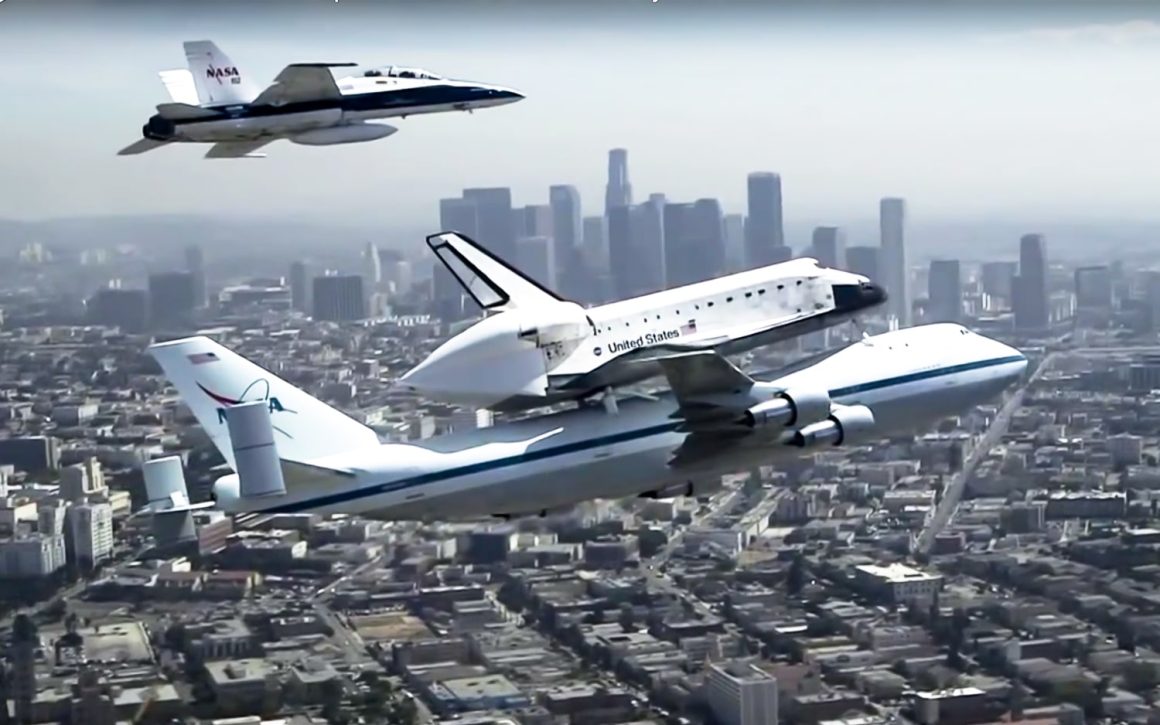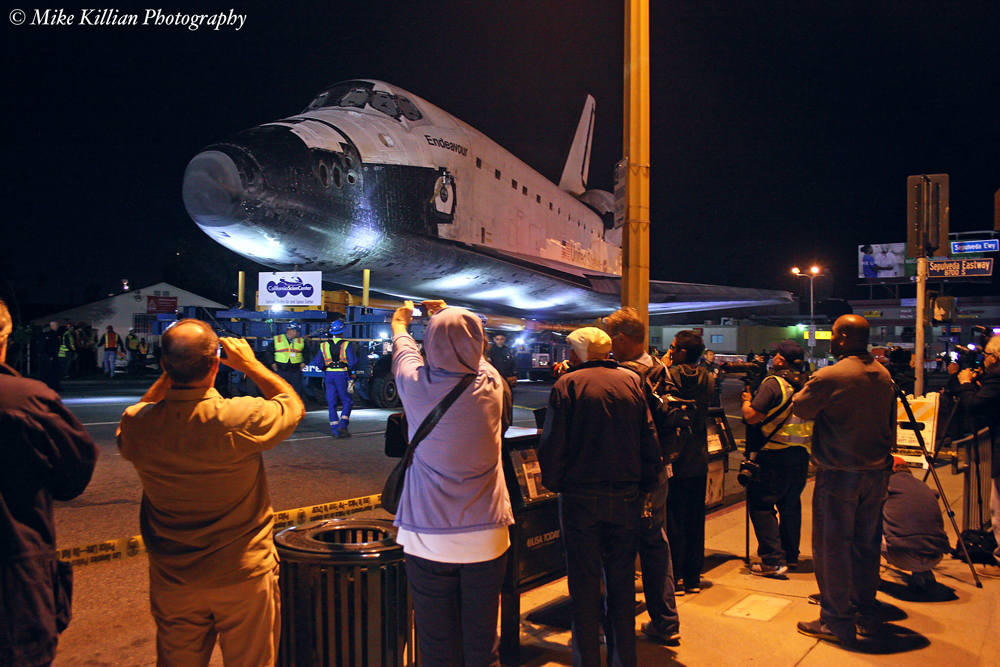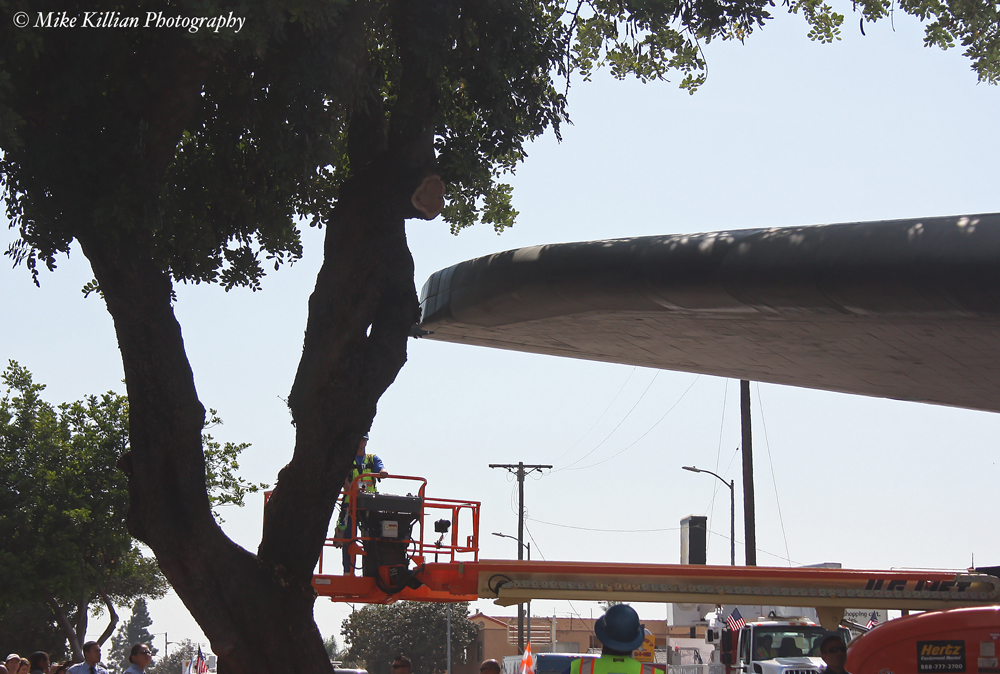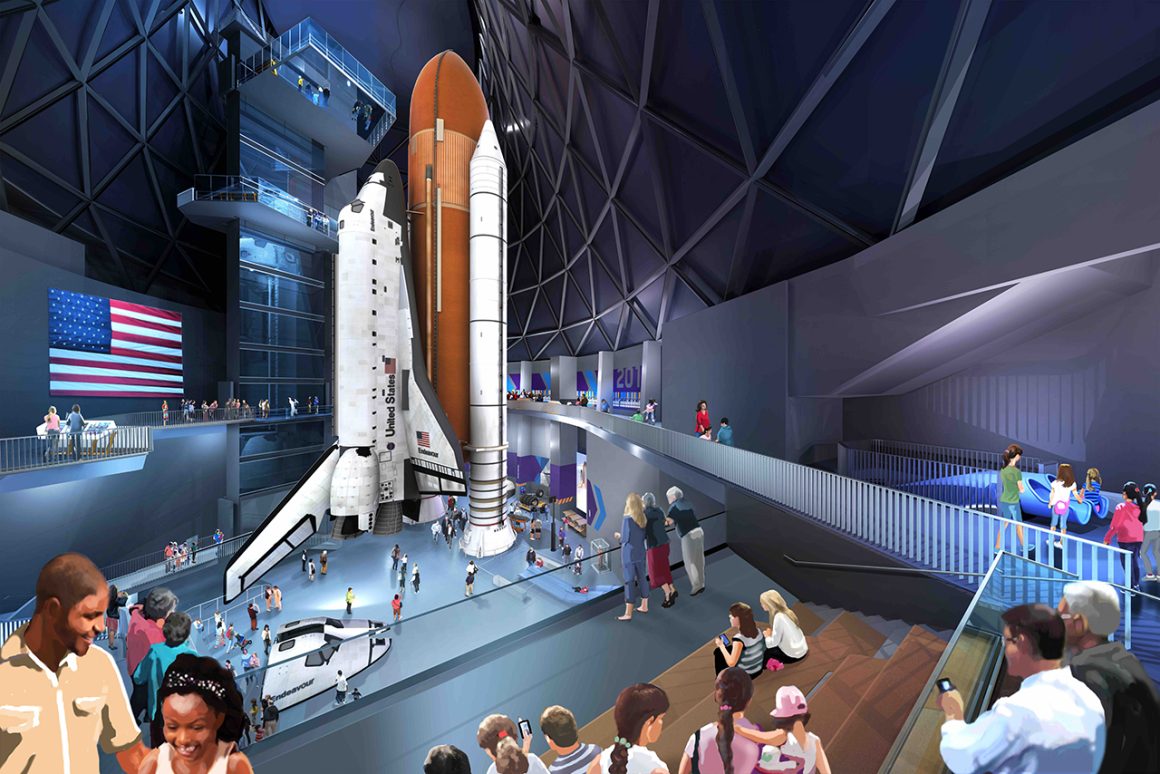A museum in California has successfully raised space shuttle Endeavour for display in launch position. The California Science Center (CSC) stacked the orbiter to a real external tank and pair of (empty) solid rocket boosters, for what will be the most impressive aerospace display in the world when it’s all finished.
NASA’s last space shuttle to be produced was born from the loss of Challenger. Endeavour flew 25 missions, and was the major player in constructing the International Space Station (ISS). She flew 25 missions over 19 years, and flew 122 million miles with 299 days in orbit.

Endeavour closed out its career in 2011 on mission STS-134. NASA awarded Endeavour, Discovery and Atlantis to museums across the country. The shuttle prototype Enterprise was also relocated.
Endeavour ended up at the California Science Center in Los Angeles, CA. The shuttle’s roots are in Southern California, having been built in Palmdale. Even today, the region is still a major player in the aerospace industry. One example being the recent roll-out of the X-59 quiet supersonic jet tech demonstrator.

Retirement and final flight
Following STS-134, NASA put Endeavour through a thorough retirement transition operation at Kennedy Space Center. This included salvaging heritage hardware for later use (like the engines), and draining the orbiter of toxic propellants.
Some of these operations required powering up Endeavour, to open valves to drain some of the shuttle’s toxic fluids. AvGeekery was one of very few who were invited onboard. Watch our video below.
Endeavour was then flown from Florida to California, riding “piggyback” atop a NASA modified 747 shuttle carrier aircraft. That 747 is now on display at Johnson Space Center in Houston, TX.
Million of people watched on live TV and online as NASA overflew cities across the nation on the trip from Florida. On the last day of flying, it gave a salute across California, before landing at LAX. Watch some of the incredible aerial video here.

A historic move through LA
In the meantime, both the museum and city of LA, local authorities and DOT, were making preparation to move the huge shuttle across town.
The multi-day transport required removing power lines, cutting down or trimming trees, diverting traffic, and making sure the path was clear. Public safety was the top priority.

Over 1 million spectators came out to watch the multi-day move, without a single police report filed related to the event.
In some instances, the 122-foot long shuttle had only inches to spare for its 78-foot wingspan, as it crawled across the city.

The 178,000 pound Endeavour has been on display in a shed ever since, while the museum raised the funds to construct an entire new and permanent aerospace exhibit. Endeavour will be the center focus of the new Samuel Oschin Air and Space Center.
Raised and stacked for launch display
A team of experts with decades of experience working with NASA and the shuttle program helped lift and mate Endeavour to the stack. Some were even with NASA from the very first space shuttle launch in 1981.

The new 200,000 sq ft Samuel Oschin Air and Space Center will be constructed around Endeavour. Therefore, the public won’t see the shuttle again for a few years, until the exhibit is complete.
In addition to Endeavour, the new expansion promises an impressive collection of 100 authentic artifacts integrated with 100 new hands-on exhibits.

“Guests of all ages will be encouraged to investigate scientific and engineering principles of atmospheric flight and the exploration of the universe in three major galleries. The Aviation Gallery, Shuttle Gallery, and Space Gallery,” says the CSC.
“The Samuel Oschin Air and Space Center will provide a one-of-a-kind educational opportunity for our Los Angeles community and guests from around the globe.”

